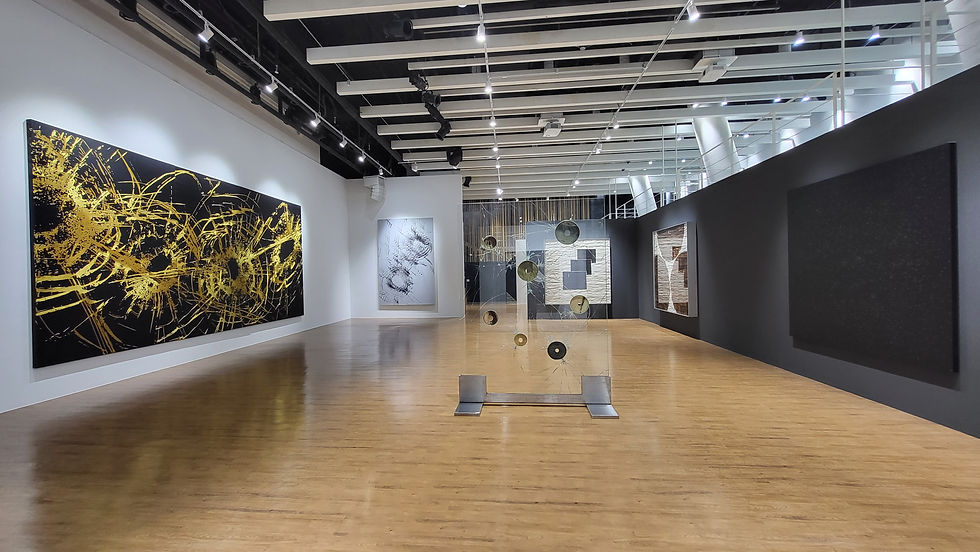“Parallel Affinity,” a solo show presenting nearly 30 important recent works by Chinese artist Zhao Zhao, will open on March 12 in Tang Contemporary Art’s new space in Seoul’s Gangnam neighbourhood.
As an important figure in the new generation of artists, Zhao Zhao crosses time and space to connect history with new trends in our current reality. He has broken barriers that are otherwise difficult to overcome, using them in contemporary art to create a distinctive artistic style and way of working.
Zhao Zhao was born in Xinjiang, China. Considered Central Asia in ancient times, Xinjiang was a rich region of changing civilizations, and modern production relations led to the spread of humans and civilizations. Beginning in junior high school, Zhao Zhao had to participate in the voluntary labor of picking cotton during every autumn harvest for six years, so he has deep thoughts and feelings about cotton. In “White” (2020), he built a labyrinth of cotton, which pushed concrete images informed by childhood memories toward a broader global history of cultural plunder. In his new work Spread, cotton continues to serve as a guide, offering another spiritual direction for the color white and a metaphysical, mysterious mode of perception. When white burns, it becomes black, and the old world’s deeper meanings and interactions burn with it. Here, material is transformed into spiritual power. In this way, the life of cotton connects to a more compelling presence.
In his early Constellations series, Zhao Zhao shot a gun at a pane of glass, and the radiating cracks that resulted looked like constellations. Later, he reinterpreted these markings in oil painting and embroidery, and his installation Jade Disks: Constellations added jade disks to the original series. Jade is a symbol of Chinese aristocratic culture and a ceremonial material revered in ancient China. In Gansu, an area that has produced an abundance of jade vessels, Zhao Zhao has sought out jade objects several hundred years old, so that his Constellations will transcend politics and expand to encompass reflections on five thousand years of Chinese history and culture.
In a very restrained way, Zhao Zhao’s One Second fosters dialogue about ways of depicting time. Holding a pencil tightly in one hand, he quickly leaves a linear mark on the paper in one second. The pencil drawing is dictated by the subconscious, reflecting the disorder and lack of control in the depths of the human heart. In contrast, Control involves gourds, which have been vehicles for the human spirit and secular desires at various points in history. As they grow, they are often subject to man-made correction and control.
Zhao Zhao’s Buddha Statue and Heavenly Gates: Dragon and Man transcend temporal and geographic limitations to offer a new understanding of ancient art. He has studied ancient Chinese culture for many years and collected numerous cultural artifacts from around the world. He brings together a wide range of vocabularies and civilizations from different times and places in these works. Distant histories will always be forgotten and stories from a specific time and place will fade away. In art, only when a spiritual form is connected to a story can it become eternal.
In the transformation between light and heavy, fleeting and eternal, Zhao Zhao has created art that belongs to this era but could also resist it. He has developed the possibilities of many different mediums, touching on different geographies and bringing together historical contexts and a range of artistic styles. He presents a unique sense of space and time, while building a kind of parallel affinity in a complex world.
 Spread (1/3 Ed + 2AP) 4K color video, sound 18 : 07 min 2021 |  Spread #20 Mixed media, cotton 200 x 100 x 18 cm 2021 |  Spread #18 Mixed media, cotton 200 x 100 x 18 cm 2021 |
|---|---|---|
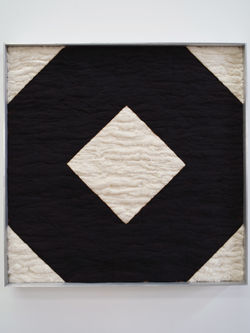 Spread Mixed media, cotton 150 x 150 x 18 cm 2021 |  Spread : Wan Cotton, aluminium 160 x 160 x 18 cm 2021 |  Spread Mixed media, cotton 200 x 200 x 18 cm 2021 |
 Spread #16 Mixed media, cotton 200 x 200 x 18 cm 2021 |  Constellations Embroidery on silk 180 x 260 cm 2021 |  Constellations Embroidery on silk 300 x 200 cm 2021 |
 Constellations Embroidery on silk 300 x 600 cm (300 x 200 x 3 pieces) 2019 | 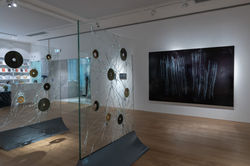 Jade Constellations Glass and jade installation 220 x 160 cm 2018 | 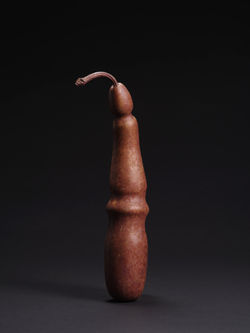 Control Copper 31.5 x 6 cm 2021 |
 Control Copper 29 x 6.8 cm 2021 | 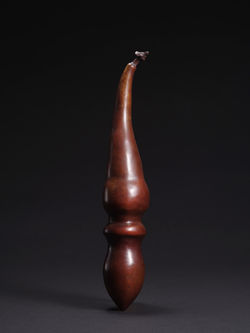 Control Copper 35 x 6.5 cm 2021 |  Dragon Bronze 33 x 37.5 cm 2021 |
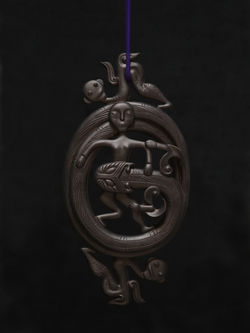 Heavenly Gate: Dragon with Human Copper 61 x 31 cm 2021 |  Control Stainless steel and rosewood 250 x 135 x 135 cm 2019 |  Control (1/6 Ed) Video 09 : 36 min 2018 |
 Sensitive Person Oil on canvas 37 x 25 cm 2018 | 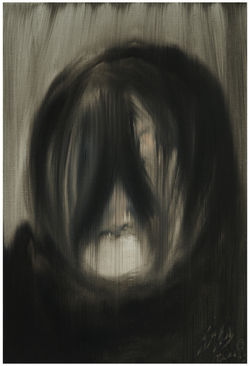 Desensitized Person Oil on canvas 37 x 25 cm 2018 |  Insensitive Person Oil on canvas 37 x 25 cm 2018 |
 Singer Oil on canvas 60 x 50 cm 2018 |  Singer Oil on canvas 60 x 50 cm 2018 | 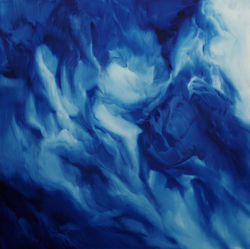 Sky Oil on canvas 150 x 150 cm 2021-2022 |
 Sky Oil on canvas 150 x 150 cm 2021-2022 |  Sky Oil on canvas 150 x 150 cm 2021-2022 |  Mouse Dropping 39 Oil on canvas 200 x 200 cm 2015 |
 Mouse Dropping 62 Oil on canvas 200 x 200 cm 2015 |  Autonomy Acrylic on canvas 200 x 200 cm 2021 |  Up and Down Acrylic on canvas 200 x 200 cm 2021 |
 One second Oil on canvas 200 x 300 cm 2018 | 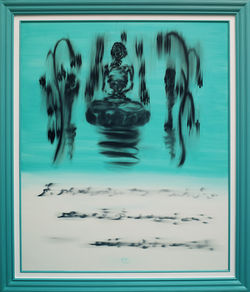 The Buddha Oil on canvas 180 x 150 cm 2021 |  The Buddha Mixed media on canvas 150 x 100 cm 2021 |
Artist

Zhao Zhao
Born in 1982 in Xinjiang, China, and he currently lives and works in Beijing and Los Angeles.
In his art, he engages with real subjects in multiple mediums and plays with art forms, emphasizing an
exploration of the relationship between the individual and the rest of society. His work is developed around the subtle emotional changes that take place as we are confronted with diverse cultural influences. He brings together the expressive methods of contemporary art and traditional culture to create metaphors for people's living circumstances and modern society's real conditions in a globalized world. His works also reflect his attitudes toward the coexistence of collective and individual ideals.
In recent years, Zhao Zhao's bold, radical artistic practice has attracted international attention. He has
presented solo exhibitions and personal projects at Long Museum(Shanghai), Carl Kostyál (Stockholm), Song Art Museum (Beijing), Nanchizi Museum (Beijing), the Alexander Ochs Gallery (Berlin), Roberts & Tilton (Los Angeles), Chambers Gallery (New York), Mizuma and One Gallery (Beijing), Lin & Lin Gallery (Taipei), Tang Contemporary Art (Hong Kong), Tang Contemporary Art (Beijing), and China Art Archives and Warehouse (Beijing). His work has been shown in group exhibitions and collected by many institutions, including MoMA PSI (New York), the Tampa Museum of Art (Tampa), Pinchuk Art Center (Kiev), Groninger Museum (Groningen), the Museum of Asian Art (Berlin), Hamburger Bahnhof Museum for Contemporary Art (Berlin), Padiglione d'Arte Contemporanea (Milan), MAXXI National Museum of 21st Century Art (Rome), the DSL. Collection (Paris), Castellón Contemporary Art Space (Castellón), the White Rabbit Gallery (Sydney), M+ (Hong Kong), the Minsheng Art Museum (Beijing), the Ullens Center for Contemporary Art (Beijing), the New Century Art Foundation (Beijing). Taikang Space (Beijing), Luxelakes• A4 Art Museum (Chengdu), Minsheng Art Museum (Shanghai), the Museum of Contemporary Art (Shanghai), Start Museum (Shanghai), Ming Contemporary Art Museum (Shanghai), Tianjin Art Museum (Tianjin), the Hubei Museum of Art (Wuhan), the He Xiangning Art Museum (Shenzhen), Wanlin Art Museum at Wuhan University (Wuhan), the Wuzhen Contemporary Art Exhibition 2019 (Wuzhen), and the Yokohama Triennale (Yokohama).
In 2019, Zhao Zhao won the Artist of the Year Award at the Thirteenth Award of Art China (AAC). In 2017, his piece Project Taklamakan was selected as the poster and catalog cover image for the Yokohama Triennale. That same year, Zhao Zhao was named one of China's top 10 artists by CoBo and he won the Young Artist of the Year Nomination Award at the Eleventh Award of Art China (AAC). In 2014, Modern Painters named Zhao Zhao one of the world's top 25 artists.
Curator

Cui Cancan
Cui Cancan is an active Chinese independent curator and critic.
He has won CCAA (Chinese Contemporary Art Award) Art Review Award for Youth, Critics’ Award in Chinese contemporary art by YISHU, Annual Exhibition Award by Art Power 100, Nominee for Lincoln Curator Prize by TANC Asia Prize, The Best Artist Solo Exhibition of the Year Award by Chinese Contemporary Art News, Best Exhibition Award by Gallery Week Beijing, Annual Curator Award by Art Bank, et cetera.
Since 2012, he has curated almost 100 major exhibitions, including group exhibitions like Hei Qiao Night Way (2013), Rural Wash, Cut and Blow-dry(2013), FUCKOFF II (2013), Unlived by What is Seen (2014), Between the 5th and 6th Ring Road in Beijing (2015), The Decameron (2016), Rip it Up (2017), Spring Festival Projects (2018) , The Curation Workshop (2019) and Nine-Tiered(2020). He has curated artists’ solo exhibitions such as Ai Weiwei, Bao Xiaowei, Chen Danqing, Chen Yufan, Chen Yujun, Feng Lin, Han Dong, He Yunchang, Huang Yishan, Jiang Bo, Li Binyuan, Liu Gangshun, Liu Jianhua, Li Qing, Li Zhanyang, Ding Muer, Ma Ke, Mao Yan, Qin Qi, Sui Jianguo, Shijiezi Art Museum, Shi Jinsong, Shen Shaomin, Tan Ping, Wang Qingsong, Xie Nanxing, Xia Xiaowan, Xia Xing, Xiao Yu, Xu Zhongmin, Xu Xiaoguo, Zong Ning, Polit-Sheer-Form, Zhang Yue and Zhao Zhao et cetera.

